1972 Auburn, Indiana Revival
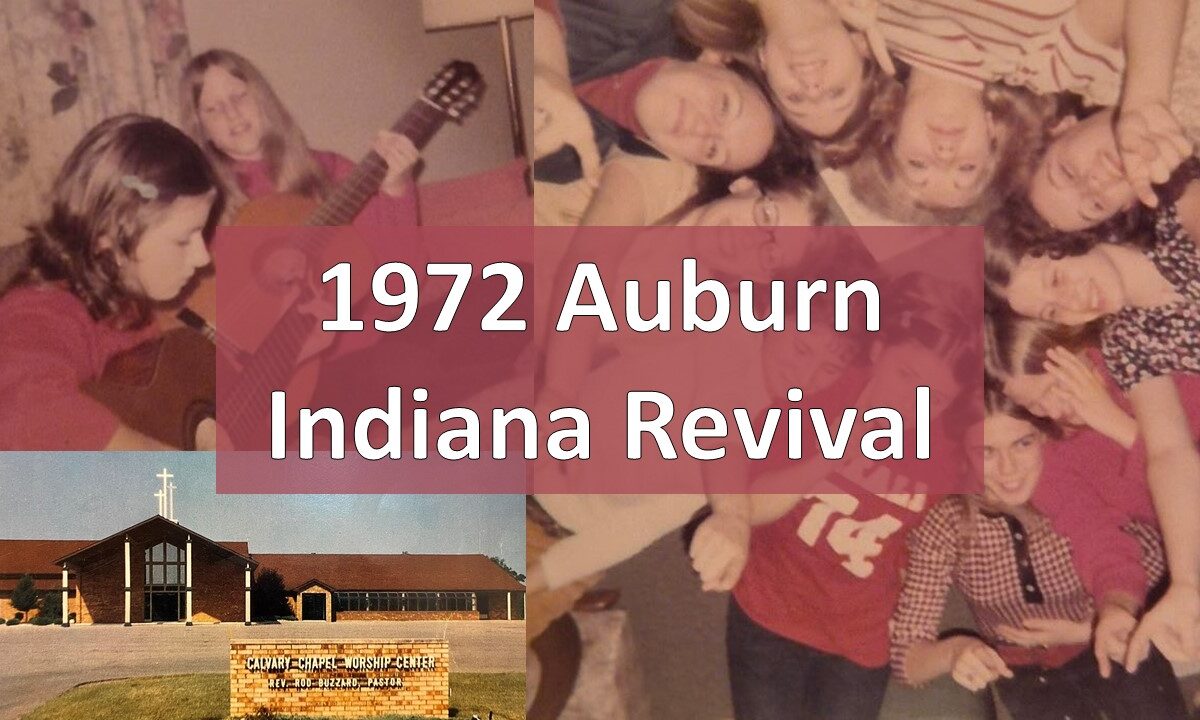


Introduction
The 1972 Auburn, Indiana Revival was both a part of and a result of several broader movements that swept the United States during the mid-20th century. Beginning in 1960, the nation experienced the following revival and renewal movements:
► 1960 Charismatic Movement
► 1967 Catholic Charismatic Renewal
► 1967 Jesus Movement
The 1967 Jesus Movement had a nationwide impact, influencing not only the United States but also many other nations. The 1969 Northeast Indiana Revival reflected the local expression of the Jesus Movement. The 1972 Auburn, Indiana Revival continued and overflowed from these preceding revivals.
The Beginnings of the Revival
In 1966, at 10 years old, Pam Creecy, living in Wabash, Indiana, attended a Vacation Bible School (VBS). Coming from a family that did not attend church, she was unfamiliar with the Gospel message. During VBS, the “Wordless Book” was used to present the Gospel. Although she did not fully comprehend it at the time, one question lingered in her heart:
Where are my sins?
A few years later, Pam’s family moved to Auburn, Indiana. With an increasing sensitivity to spiritual matters, she asked her parents—who still did not attend church—if they would take her to church. They agreed to drop her off at a church in Auburn and pick her up afterwards. She attended for three consecutive Sundays. However, during her third visit, she overheard someone remark:
She comes alone each week.
Feeling awkward and self-conscious, Pam decided to stop attending.
But God continued working in Pam’s life. In junior high school, her boyfriend, Tim Wappes (who would later become her husband), invited her to attend Calvary Temple in Fort Wayne with him and his family. She eagerly accepted, and after just a couple of weeks, she heard a sermon from Pastor Paul E. Paino that was both clear and deeply impactful. When an altar call was given, inviting those who wanted to place their faith in Christ to come forward for prayer, Pam responded without hesitation. She was then guided to a side room, along with others, where she received additional counsel on beginning her walk with Jesus.
From that Sunday onward, Tim’s family picked Pam up for church each week. This marked the beginning of a profound and transformative work of God in her life—one far greater and more impactful than she could have ever imagined.
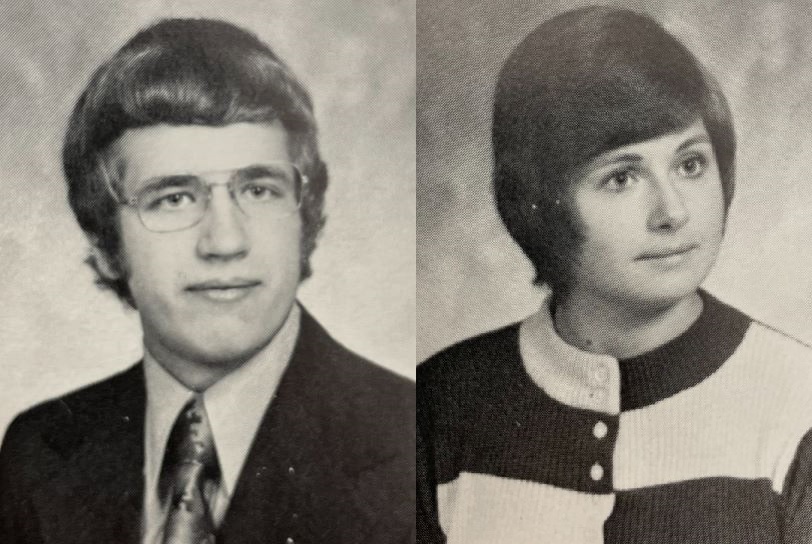
Tim Wappes and Pam Creecy (Wappes)
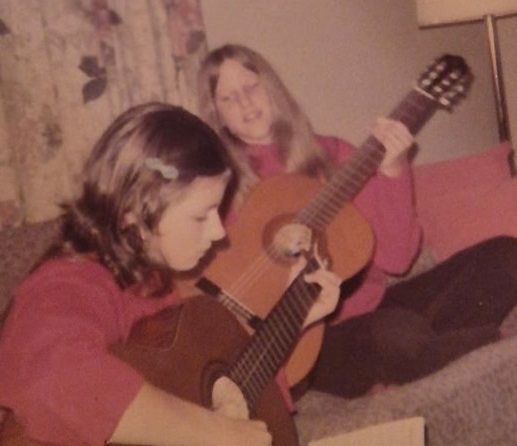
Pam Creecy and Julie Hervey
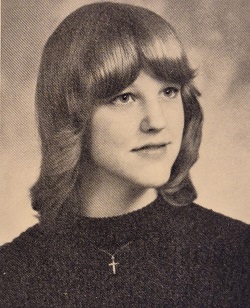
Julie Hervey (Panning)
Singing Group: Old Fashioned Idea
In the fall of 1972, Pam and her friend Julie Hervey joined Old Fashioned Idea, a singing group from Calvary Temple. The group traveled to various churches on weekends, sharing the Gospel through music.
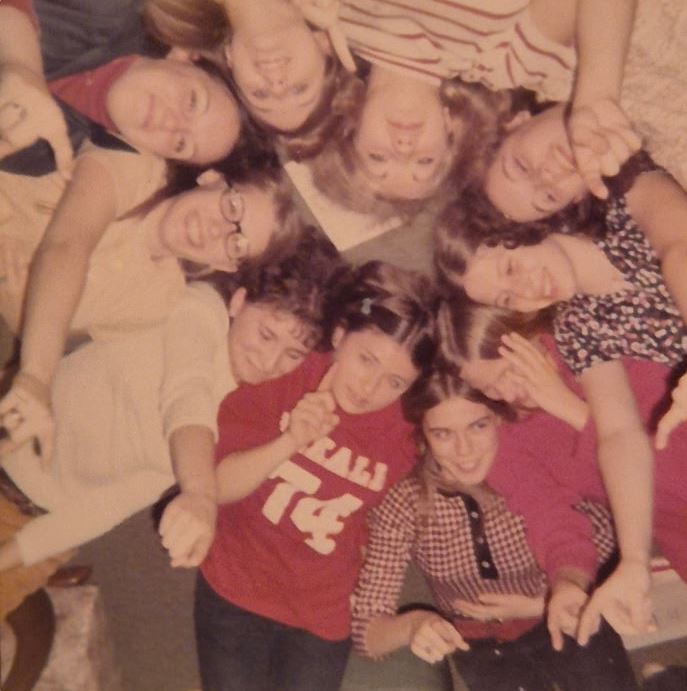
16th Birthday Party for Pam Creecy. Note the index finger pointing upward, symbolizing Jesus is the only way.
Pictured: Bottom center, in a red “DeKalb 74” shirt—Pam Creecy; and clockwise: Rhonda Clark, Chris Watson, Cissy Riggs, Kristie Moore, Diane Pierce, Margie Pfister, Trionne Hile, Julie Hervey, Shela Raub. Not pictured/ photographer: Cindy Weimer.

Shela Raub (Kriener)
For Pam’s 16th birthday on February 28, 1972, she hosted an overnight party at her home, inviting both Christian and non-Christian friends. That evening, the girls spent time singing worship songs and praying for other students. One of the attendees, Shela Raub (Kriener), was deeply moved by the experience and shortly after gave her life to Jesus.
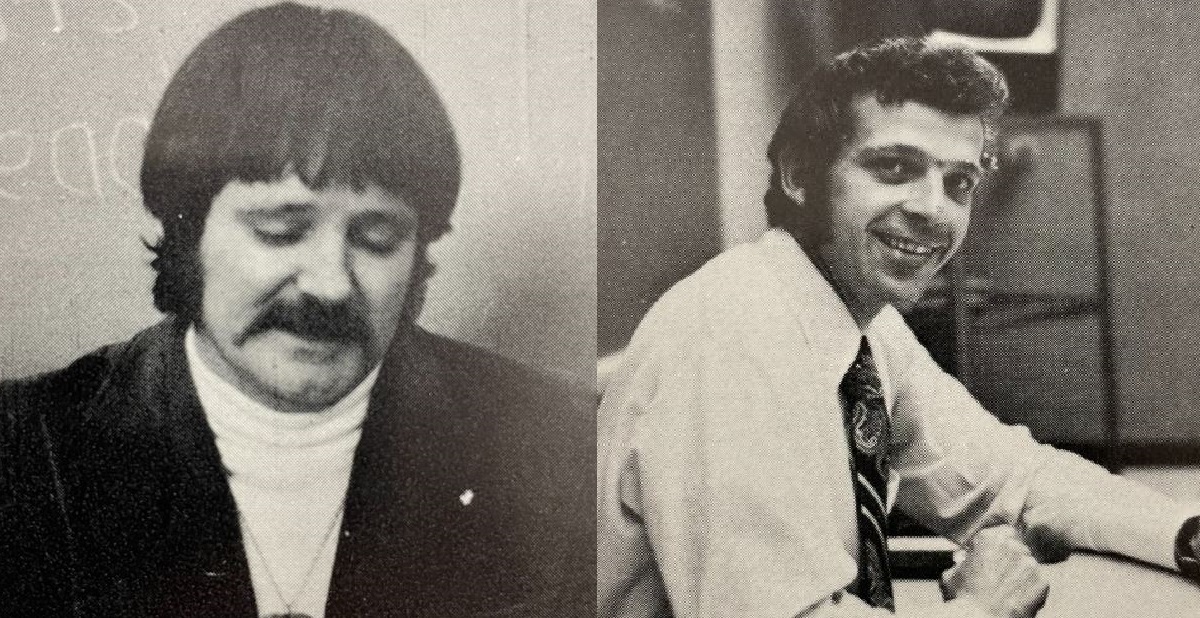
Rod Hall & Alan Black, teachers at DeKalb High School,
as well as spiritual advisors to students
Early Morning School Prayer
In the spring of 1973, during Pam’s 11th grade at DeKalb High School, she and Julie Hervey approached one of their teachers, Al Black, to ask how they could gain approval to hold a morning prayer time at school. He directed them to the principal, who approved the request on the condition that it take place before the start of the school day.
The group initially met in Rod Hall’s classroom, Monday through Friday. Starting with just eight students, the group quickly outgrew the space and relocated to the Computer Lab.
Each morning, Pam and Julie led the students in worship, playing their guitars, reading the Bible, and praying for the salvation of their peers. These times of prayer also opened the door for deeper conversations with fellow students throughout the day.
Meanwhile, Campus Life, a ministry within the Youth for Christ, organization, was highly active at DeKalb High School. It provided encouragement and discipleship opportunities for the many students who were regularly coming to faith in Jesus.
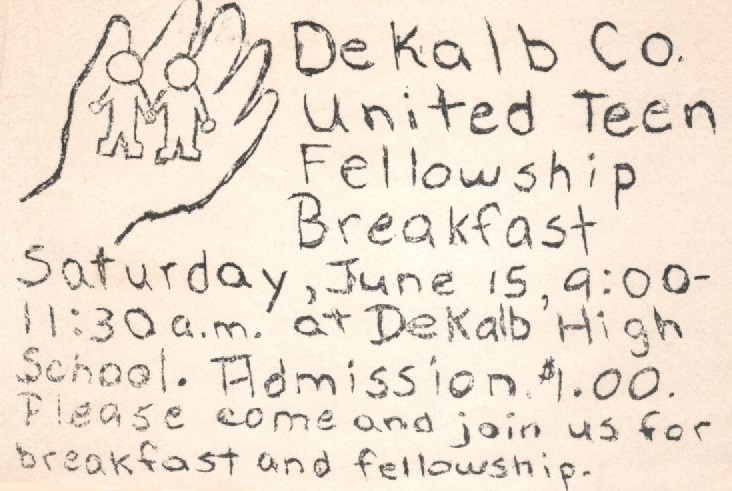
DeKalb County United Teen Prayer Movement
A teen prayer movement emerged from the gathering at Pam Creecy’s 16th birthday party and was sustained by the dedication of the teens who attended. Shela Raub (Kreiner) rose to serve as chairman of the planning committee for the “DeKalb Co. United Teen Fellowship Breakfast” held on June 15, 1974. The event was attended by 657 people, with students from area high schools actively involved in the planning. John A. Roush, assistant football coach at Miami University, Oxford, Ohio, delivered the keynote address.
Documents of the United Teen Fellowship Breakfast
First document with the following:
1. Promotional flyer for the event.
2. Event program
3. Newspaper clipping promoting the keynote speaker: John A. Roush.
4. Newspaper clipping promoting the special guests, Jon and Don McGlocklin.
5. Letter from Governor Otis R. Bowen, expressing his regret of not being able to attend.
Second Document with the following:
6. Envelope and letter from US. Representative, J. Edward Roush. The letter compliments Shela Raub for her leadership in planning and executing the United Teen Fellowship Breakfast.
7. Letter from Doctor Floyd and Eva Coleman, confirming the teens that her husband, Dr. Floyd Coleman, will be in attendance at the prayer breakfast, but regretting she will not.
8. Newspaper clipping of June 20, 1974, reporting on the United Teen Fellowship Breakfast.
9. Prayer card sent in by Julie Nixon Eisenhower, written by Madame Chiang Kai-shek, a copy of which was given to each in attendance.
Home Bible Studies
On July 3, 1970, The Adam’s Apple, a Christian folk coffeehouse and youth ministry associated with Calvary Temple, conducted an outreach at The Landing, a historic district in downtown in Fort Wayne, Indiana. During this event, Rod Buzzard gave his life to Jesus and was born again.
Following his conversion, Buzzard became a committed attendee at Calvary Temple and enrolled in the church’s Christian Training Center, a two-year college program designed to prepare men and women for full-time ministry.
Buzzard soon began receiving visions and dreams of his calling to minister in Auburn, Indiana. Acting on this conviction, he made weekly trips to Auburn, witnessing to people on the streets and praying for the community.
During one such visit in the summer of 1973, Buzzard encountered Pam Creecy and other girls at the local Dairy Queen. The girls recognized him as they all attended Calvary Temple. When they asked why he was in Auburn, he shared his vision. To his surprise, they responded that he was the answer to their prayers, as they had been praying for a church in Auburn.
From that encounter, they decided to start a Bible study at the apartment of Pam’s father, Floyd (Cliff) Creecy. Cliff later gave his life to Jesus and was baptized by Buzzard. The Bible studies in that apartment continued from September – December 1973. In January 1974, the meetings were relocated to Buzzard’s home.
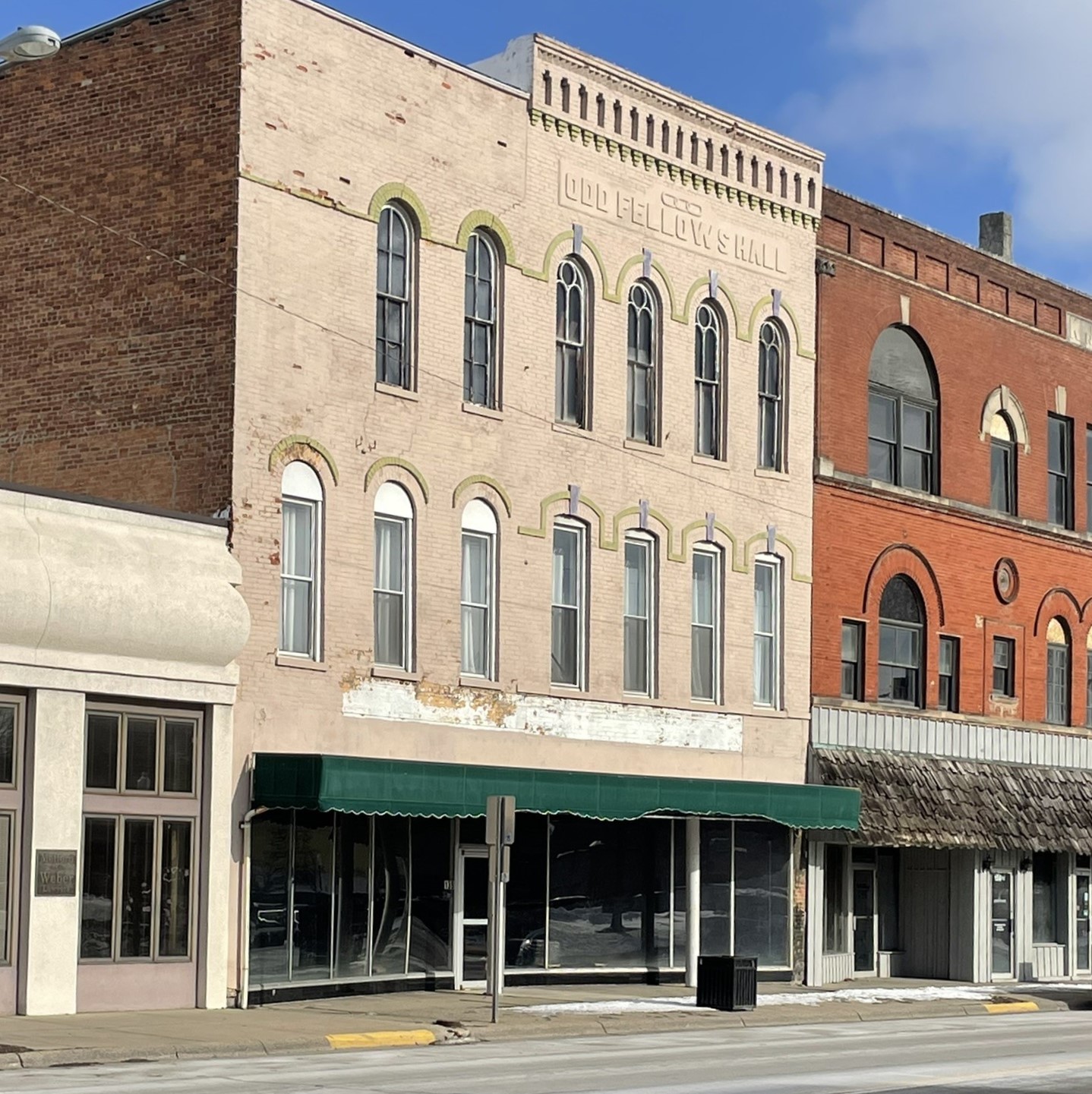
The Odd Fellow’s Hall on the north side of the square in Auburn, IN
By July 1975, the Bible study group had grown beyond the capacity of its meeting space. Rod Buzzard then rented the second floor of the Odd Fellows Hall on the north side of Auburn’s town square.
This ministry, which became known as Angel’s Wings, functioned as a Christian coffeehouse—a culturally popular outreach strategy of the time. The focus was on reaching hippies. The attendees, all under 21 years old, would sit on the floor, sing Jesus Music, and listen to teachings from the Word of God.
Rod Buzzard recalled how Angel’s Wings got its name:
We were praying about what we would call the ministry. Our aim was to reach the hippies in the community, and one of the brothers said, ‘How about Angel’s Wings?’ It sounded good to all of us because Angel’s are messengers, and we felt like we were being carried by the Lord to share the message of the cross with all who would hear.
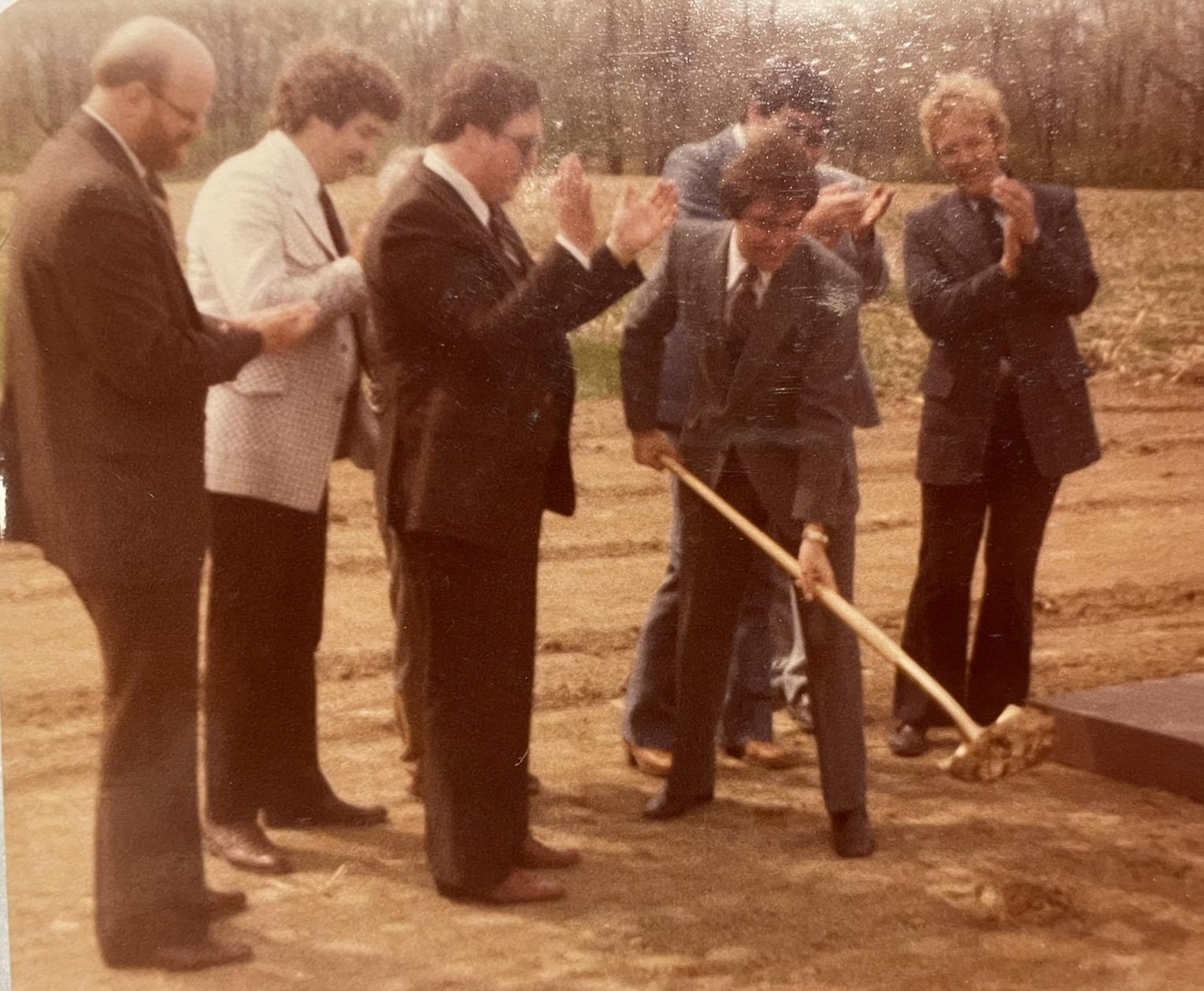
Groundbreaking Ceremony for Calvary Chapel of Auburn
— Spring 1980
Pastors pictured (left to right): Larry Goodwin, unknown, Dennis Kutzner, Rod Buzzard, Mark Stevenson, Mike Failor
A Flourishing Church
As Angel’s Wings grew, it became evident that an official church was needed. This led to the purchase of property and the construction of a church building at 5874 County Road 427, Auburn, Indiana.
The church was officially named Calvary Chapel of Auburn, although it became more widely known as Calvary Chapel Worship Center. Over the decades, this church became a hub for missions, evangelism, and discipleship. It raised up missionaries and pastors and brought many to Christ through children’s ministries, inspiring musicals, and other outreach efforts.
A few of those who were developed as missionaries and pastors include:
• Dan & Tracy Foster
• Tim Hacker
• Matt & Sarah Keller
• Mark & Stephanie Pyles
• Mark & Judy Stevens
• Chuck & Joyce Summers
• Tom & Laurie Wilcoxson
• Jack & Stephanie Wolf
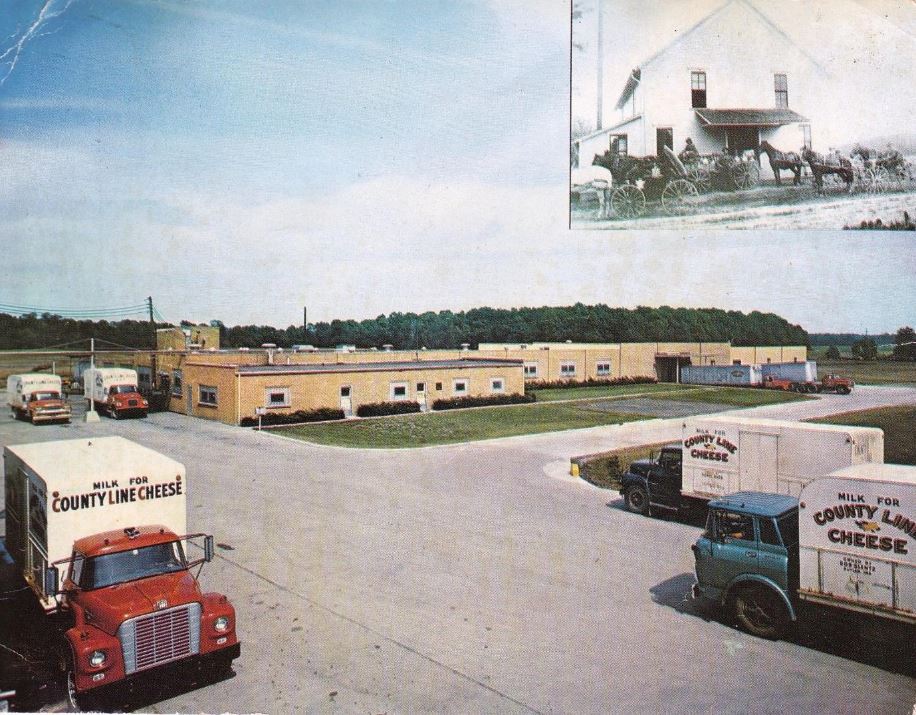
County Line Cheese Company
Revival at County Line Cheese Co.
While Angel’s Wings meetings were ongoing and before Calvary Chapel of Auburn was fully constructed, a revival occurred among the employees at County Line Cheese, located a few miles south of Auburn.
Several employees involved in Angel’s Wings passionately shared their faith with their coworkers, sparking a movement within the company.
A Few Who Converted to Christ at County Line Cheese
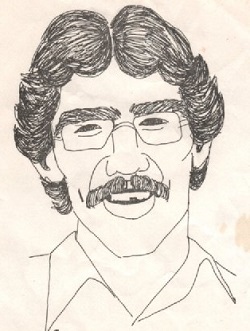
Hal Mortorff
(1955-1981)
► Hal Mortorff: A passionate and outspoken witness for Jesus, Hal served as an elder at Angel’s Wings and played a pivotal role in leading many to Jesus. His fervent prayers and evangelistic efforts were widely credited as the spark behind the revival at County Line Cheese.
Hal’s sudden passing at the age of 29, while jogging, deeply impacted the community. His funeral was attended by so many that the procession of cars stretched nearly three miles.
Hal Mortorff’s testimony, written about a year prior to his death, and an article written by his wife after his passing, can be read at this link.
► Larry Schoonover: Larry experienced a dramatic life transformation after his conversion, which followed a motorcycle accident. His new life in Christ inspired many around him.
► Rick Helmick: Rick was profoundly influenced by the lifestyle changes in Larry Schoonover, prompting him to place his faith Jesus.
► Chuck Summers: After his conversion to Christ, Chuck went on to serve as one of the pastors at Calvary Chapel of Auburn.
► Roger Carper: Roger’s journey to faith began after overhearing a conversation between Rick Helmick and Chuck Summers at County Line Cheese. Their discussion was about Christians being thrown to lions in ancient times, which led Chuck to ask Roger: “Are you a Christian or a lion?” That question resonated deeply with Roger throughout the day and ultimately broke him down that night, leading him to surrender his life to Jesus. The next day, he joyfully embraced everyone he met, knowing his life had changed forever.
► Don Bay: Don placed a daily “verse of the day” on the company bulletin board each day. Despite facing persecution, his consistent witness contributed to a steady flow of conversions to Christ.
► Duane (Butch) Schoonover: Despite relentless persecution—such as acid being poured on his motorcycle and his locker being glued shut—Butch remained steadfast in his faith, serving as an enduring testimony to others.
Fishing Trips
Some of the men from County Line Cheese organized fishing trips and strategically invited unsaved men to accompany them. These outings became unique opportunities to share the Gospel in a relaxed and engaging setting.

Calvary Chapel of Auburn; 1993
Closure of Calvary Chapel of Auburn
In January 2005, Pastor Rod Buzzard relocated his family to Florida. Over the next two decades, Calvary Chapel of Auburn experienced a gradual decline in attendance. Efforts to revitalize the church included renaming it Heritage Community Church, but the change did not yield the desired results. By 2022, the church was officially closed.
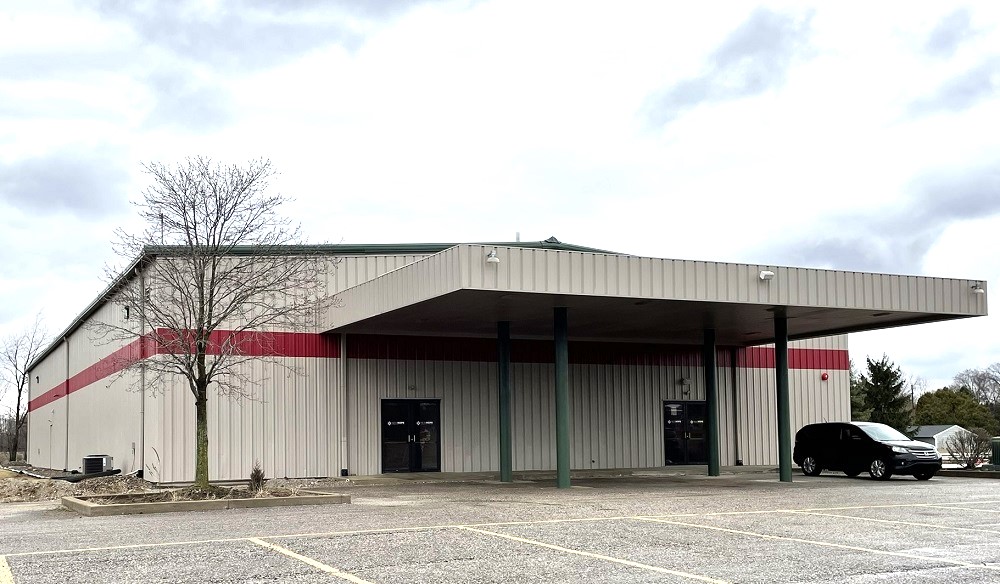
New Hope Christian Center’s South Auburn Building

Pastors at New Hope Christian Center’s South Auburn Location
Pastors: Jamie Garner, Brian Oliver, and Adam Diehl
Revival of the Location
With the property available for sale, New Hope Christian Center of Waterloo, Indiana, purchased the land and initiated renovations to establish their second location: New Hope Christian Center’s South Auburn Location.
Due to extensive restoration costs exceeding the value of the original building, it was demolished. However, a second building on the property was renovated and prepared for church services. Services in this building are to start in the spring of 2025.
Sources
► Interview with Pam Helton: January 10, 2025
► Interview with Tim & Pam Wappes: February 19, 2025
► Interview with Pastor Ralph Diehl: February 25, 2025
► Interview with Rick Helmick: January 7, 2025
► Interview with Roger Carper: January 4, 2025
► Interview with Shela Kriener: December 18, 2024
► Interview with Steven Klein: January 13, 2025
► Interview with Pastor Adam Diehl: March 16, 2025
► Written communications with Pastor Rod Buzzard: February 22, 2025
Return to List of Revival Stories
Chet & Phyllis Swearingen:
Office: (260) 920-8248
romans1015@outlook.com
Beautiful Feet
P.O. Box 915
Auburn, IN 46706

